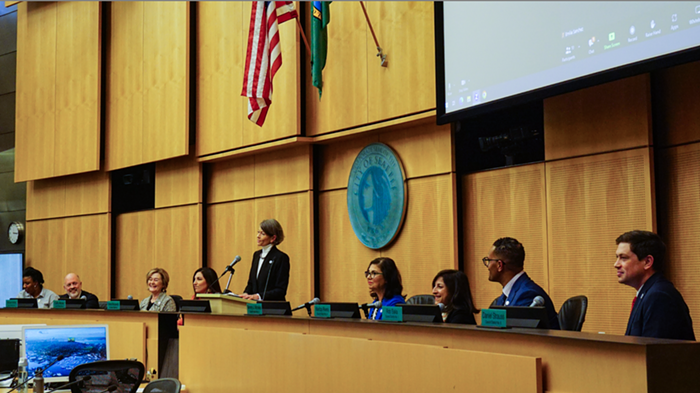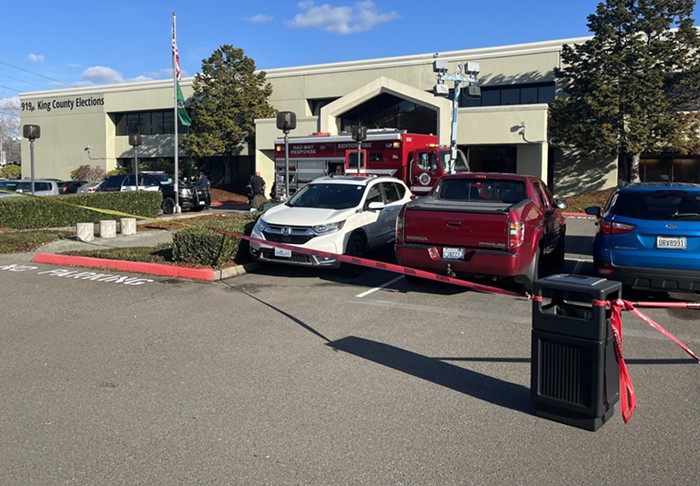The relieving platform is what prevents the weight of the soil from toppling the seawall. But the platform is only as stable as the soils underneath it.
All the seawall pilings pass through two levels of "fill" before coming to rest in what Tom Madden, the state's engineering manager for the Alaskan Way Viaduct and Seawall Project, calls "competent soil" or "terra firma," usually thick glacial till or hard pan. The deepest layer of fill is mud and rock that was deposited when Mount Rainier last blew its top. One step up is a layer of manmade fill, much of it soil from the Denny Regrade.
The problem with these layers is that they're wet. If the soil starts shaking, which is what happens in an earthquake, you get quicksand. "We think the Nisqually quake was about 15 seconds too short to cause this soil to actually liquefy," says Madden. But if it were to liquefy, "this whole thing turns into a big bowl of jelly and runs out to sea. If the seawall goes catastrophically enough, it could take the viaduct with it. A span or two could fall over."
Loss of the seawall is one of the viaduct's "modes of failure." There are two others.
The second mode involves the viaduct itself. The roadway was built in the early 1950s and its design is nowhere near current earthquake codes. In a powerful enough quake, the reinforcing steel would not contain the concrete. Chunks would fall off, the viaduct would settle a few inches, and the shift would compromise the "knee joints," places where the horizontal slabs meet the vertical columns.
The third mode of failure would involve the foundation. In the southern part of the viaduct's route, terra firma is as far as 280 feet down. The support pilings only go down 60 feet, though, which means that some of the pilings rest on incompetent soil. In addition, some of the pilings are concrete with steel spliced on top. These hybrids aren't as stable horizontally as the all-concrete pilings. If the soils liquefy, some pilings could wiggle horizontally and/or plunge vertically. "[The road] wouldn't collapse," says Madden. "But various connections would fail and it would be unable to carry the load. Nothing bigger than skateboarders could go on it."


















